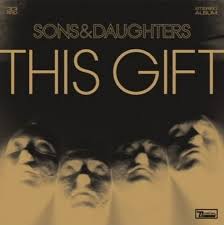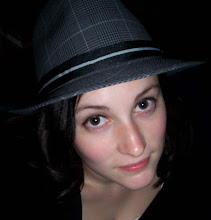 When Alice Sebold’s novel The Lovely Bones came out in 2002, it was a hard sell. I read it and adored it, but when you hand someone the book the conversation inevitably goes, “It’s about a girl who gets raped and murdered and then narrates the rest of the book from heaven as she watches her family cope with her loss, but really heaven’s not as lame as that sounds and also it’s not as depressing as the start makes it out to be and excuse me why are you running speedily towards Matthew Reilly?” Which was always a shame, as the book was truly wonderful. Luckily, word of mouth eventually caught on and it became a bestseller, along with the rerelease of Sebold’s memoir Lucky. Good for Alice.
When Alice Sebold’s novel The Lovely Bones came out in 2002, it was a hard sell. I read it and adored it, but when you hand someone the book the conversation inevitably goes, “It’s about a girl who gets raped and murdered and then narrates the rest of the book from heaven as she watches her family cope with her loss, but really heaven’s not as lame as that sounds and also it’s not as depressing as the start makes it out to be and excuse me why are you running speedily towards Matthew Reilly?” Which was always a shame, as the book was truly wonderful. Luckily, word of mouth eventually caught on and it became a bestseller, along with the rerelease of Sebold’s memoir Lucky. Good for Alice.When Peter Jackson’s movie The Lovely Bones came out in 2009, it was an easy sell. Directed by the man behind the obscure Lord of the Rings trilogy, based on a fantastic book, filled with a fantastic cast and with CGI supplied by WETA, you could suggest to anyone, “Let’s go see The Lovely Bones!” and everyone would say, “Hurrah! Let’s!” Which is a shame, really, because the movie is utterly terrible and should immediately be put in a box so we can move on to other things and pretend it never happened.
So, what is wrong with The Lovely Bones? Well, if you ignore the quality cast—Saoirse Ronan, Susan Sarandon, Rachel Weisz, Stanley Tucci, and adorable actor-statue Marky Mark Wahlberg—then, everything’s wrong. After an excruciatingly long beginning, where you know Susie Salmon’s going to die but she seems to take forever to get around to it, she is killed by authentically terrifying Stanley Tucci as the neighbourly Mr Harvey in an unseen, PG kind of way and then finds herself in an otherworldly place, not quite heaven but not quite Earth. What follows is her family’s vain search for her and their eventual realisation that Susie is not coming home, all told in a ridiculous, clichéd way and with a confusing-to-nonexistent timeline. Susie’s father, played by Wahlberg, agonises over his daughter’s disappearance while his wife whines, “We have to move on with our lives!” In the book, this makes sense, but in the movie so little time appears to have passed that she appears callous and horrible. Susie’s siblings, little brother Buckley and not-so-little sister Lindsay, have a sad, contemplative moment or two, then Buckley vanishes altogether while Lindsay starts to get suspicious about her neighbour in the green house.
Susie’s mother Abigail is said to be not coping very well with the situation, a fact that is not shown but just discussed, and her own mother Lynn comes into the scene swathed in smoke and eyeliner, by all appearances to lift the film but in fact doing nothing but participating in a couple of playful scenes of cleaning tomfoolery. She seems like she should be there to teach them lessons about living, or something; but, like everyone else, she doesn’t have sufficient screen time to do anything but taunt you with what may have been had anyone bothered to try.
It pains me that the family, so lovable in their flaws in Sebold’s novel, have barely any chance to be interesting. Wahlberg gets the best amount of time, pining for his beloved daughter and doing all he can to assist police in their search. Weisz’ Abigail is so distraught that she takes a dramatic step that would alter everything—but I was never convinced of any anguish and no one seems to care. Susie herself, so lovely and omnipotent in the book, gets a large amount of time, but therein lies the problem.
Narrative devices in books and movies differ, no doubt. Susie’s voice in the book was natural, as she observes her family and shows us what the world goes through without her. In the movie, it’s painful and distracting, as Susie has occasional voiceover narration and pulls you out of the story to remind you that she is part of the tale too: oh, look who I am, look at me frolicking, tra-la-la. We don’t know how much time has passed on the occasions we turn up in Susie’s world, where she is sometimes joined by a young girl named Holly who keeps a secret of her own (and is there to assist in a corny and frankly appalling ending). Worse still, Susie’s plane of existence is so poorly rendered—by WETA, which is unbelievable—that it almost seems authentically 1970s, when the story is set. Some scenes are executed quite nicely, like when the bottled boats Susie and her father made together float life-size in Susie’s sea and crash into rocks as her father smashes them in reality after he realises his daughter will not return. The rest of it is so painful and twee that it feels a telemovie. Expanses of water reflect moody expressions, mountains move, but it looks like an amateur effort. Perhaps with a few days and a graphics tablet, I could have had a stab at making something more entertaining and saved Jackson a couple of million. (Not that I come cheap.) And you’re frequently dragged into this dull world, when the story back home was what you are really there to see.
Another problem lies in the decision to make the film’s content so mild. There is nothing mild about the world Sebold created, because it is real and adult and awful. Making this into what is almost a family movie was a bold decision and ultimately the wrong one; The Lovely Bones becomes far more saccharine than a tale about the rape and murder of a young girl should be. As it is, the r word is not mentioned once during the film, and apart from a bloody sack and an unsettling scene in a bathtub, nothing more is given. I’m not saying I wanted poor Saoirse to have to suffer through any awful scenes at only fourteen, but I wanted more of something. Scenes between her underexplained classmate Ruth and the alarmingly older-looking (but cute) Ray, and a beautiful moment between Lindsay and her boyfriend, are dulled of their sensuality and ruin the charged reality of the book.
I could spend much longer than the two hours the movie went for banging on about how awful this movie is, but if you want a good way to spend that time, read the book of The Lovely Bones; you won’t regret it. However, do everything in your power to avoid this movie. This is a heartbreaking lesson that despite a great cast, a brilliant director, a fabulous source novel and all the volume and beauty they could put into Mark Wahlberg’s hair, by the end, you’ll wish someone had murdered you in the first hour too.























